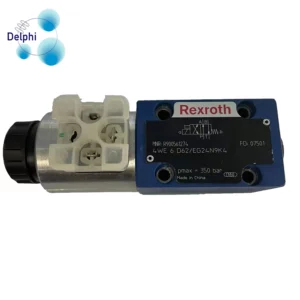There are several common methods for monitoring hydraulic pump pressure during operation.
Here are some examples:
Pressure gauges: Pressure gauges are the most common method for monitoring hydraulic pump pressure. They are typically installed on the hydraulic system near the pump or on the control panel of the machine. Pressure gauges measure the pressure of the hydraulic fluid in the system and display the reading in psi or bar.
Pressure transducers: Pressure transducers are electronic sensors that convert hydraulic pressure into an electrical signal. They are typically used in more advanced hydraulic systems and can provide more accurate and reliable readings than pressure gauges.
Pressure switches: Pressure switches are devices that are used to turn on or off a hydraulic system based on the pressure level. They are typically set to a specific pressure level, and when the pressure in the system reaches that level, the switch activates, turning on or off the system.
Flow meters: Flow meters are devices that measure the flow rate of hydraulic fluid in the system. By measuring the flow rate and pressure, the system’s overall performance can be evaluated.
Visual indicators: Visual indicators are often used to provide a quick and easy way to monitor hydraulic pump pressure. These can include sight glasses or level indicators that allow operators to visually inspect the hydraulic fluid level and pressure.
It’s important to note that the specific method used to monitor hydraulic pump pressure will depend on the type and complexity of the hydraulic system, as well as the specific requirements of the application. It’s also important to regularly inspect and maintain the monitoring equipment to ensure accurate and reliable readings.
How can I determine which monitoring method is best for my hydraulic system?
The best method for monitoring hydraulic pump pressure depends on several factors, including the type and complexity of the hydraulic system, hydraulic pump pressure the specific requirements of the application, and the level of accuracy and reliability needed.
Here are some factors to consider when selecting a monitoring method:
System complexity: More complex hydraulic systems may require more advanced monitoring methods, such as pressure transducers or flow meters, to accurately monitor pressure.
Required accuracy: If high accuracy is required, electronic monitoring methods like pressure transducers may be more appropriate than mechanical methods like pressure gauges.
Space limitations: If space is limited, smaller monitoring devices like pressure gauges may be more practical than larger devices like flow meters.
Environmental conditions: If the hydraulic system is exposed to extreme temperatures or harsh environmental conditions, monitoring devices that are designed to withstand these conditions may be necessary.
Cost: The cost of monitoring devices can vary widely, so it’s important to consider your budget when selecting a monitoring method.
Ultimately, the best way to determine which monitoring method is best for your hydraulic system is to consult with a hydraulic system expert or manufacturer. They can help you evaluate your specific needs and recommend the most appropriate monitoring method for your application.
